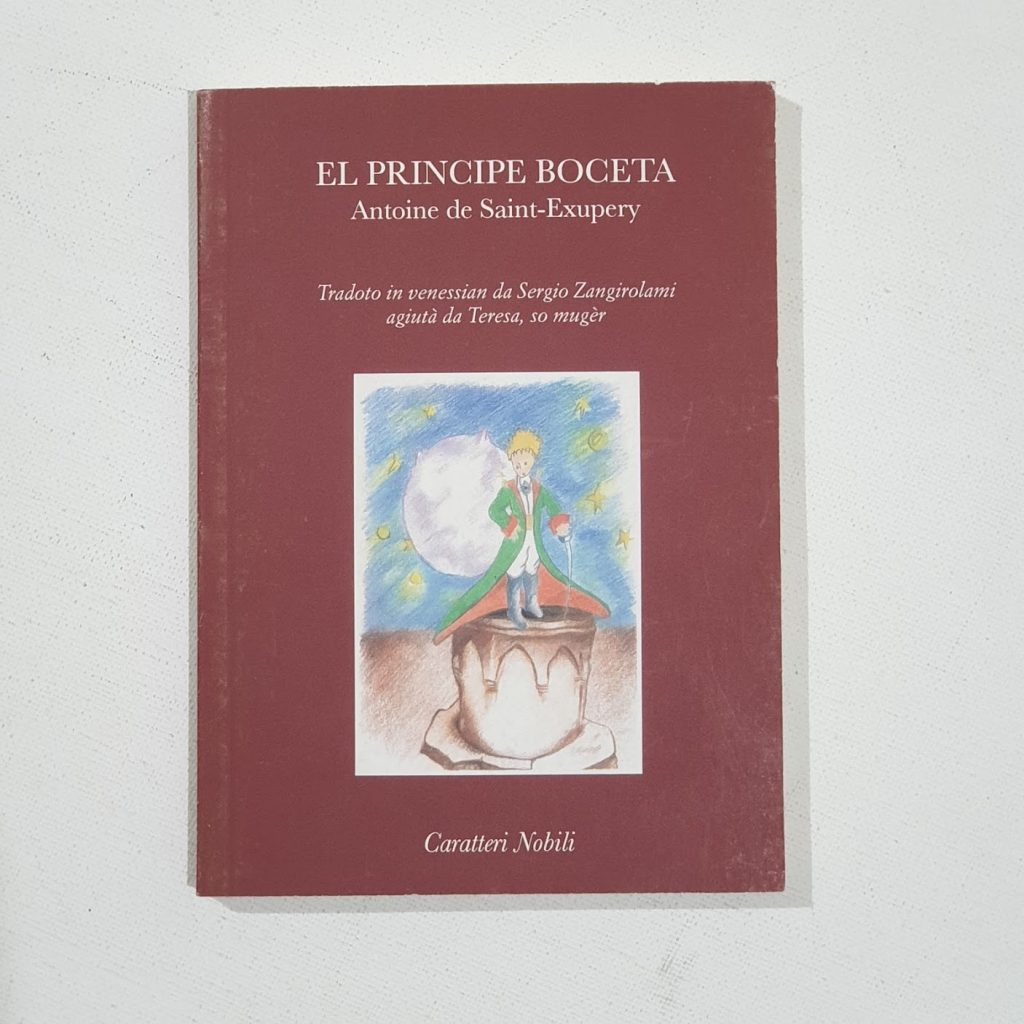
El Principe Boceta — in Venetian.
Venetian language, a.k.a. venetan, łéngoa vèneta, or vèneto, is a Romance language spoken by millions of people, primarily in the Veneto region of Italy and parts of neighbouring regions such as Friuli Venezia Giulia, Trentino, and parts of Istria in Croatia and Slovenia.
Venetian is distinct from Standard Italian and other regional languages or dialects of Italy, with its own unique phonology, grammar, and vocabulary:
- Venetian has a number of phonetic features that distinguish it from Italian, including the presence of nasal vowels and a different set of vowel sounds, which contribute to its distinct sound.
- Venetian grammar also diverges significantly from that of Standard Italian. For instance, it uses a different set of pronouns and possesses its own conjugations for verbs. The language exhibits less use of prepositions than Italian and employs different mechanisms for indicating possession and plurality.
- While sharing a Latin root with Italian and other Romance languages, Venetian has developed its own lexicon, incorporating words from Greek, German, Spanish, and Arabic due to historical trade relations.
Venetian developed from Vulgar Latin and was influenced by the various peoples who came into contact with the Venetian Republic, a major maritime power during the Middle Ages and the Renaissance. The language’s development was significantly influenced by Venice’s extensive trade networks, which extended into the Byzantine Empire and the Muslim world, among others.
Venetian is often referred to as a dialect of Italian, particularly by institutions and in formal contexts, but it is linguistically distinct enough to be considered a separate language by linguists and its speakers. Despite its wide use in everyday communication in Veneto and among the Venetian diaspora, Venetian faces challenges in terms of official recognition and support for preservation and teaching.


